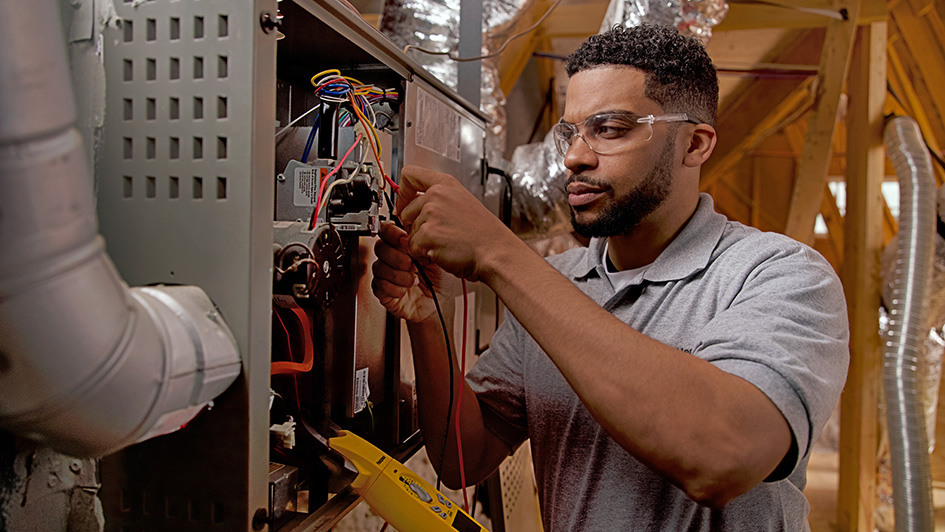
A furnace is usually a background player for your home, helping keep you warm during the cold winter months. It frequently won't be noticed until something goes wrong.
One cause might be that your furnace has a cracked heat exchanger. It can potentially be hazardous, so it’s critical to learn the symptoms of a cracked heat exchanger and what you can do if you believe that might be the problem.
What Is a Heat Exchanger in a Furnace?
A heat exchanger helps move heat from the combustion chamber of your furnace to the air that moves throughout the ventilation. It usually accomplishes this with coils or tubes that heat the air while functioning as a barrier to keep gas created in the combustion chamber, called flue gasses, from getting out into your home.
Is a Cracked Heat Exchanger Dangerous?
Given its important role, it’s no surprise that a cracked heat exchanger can be very dangerous. A crack in the heat exchanger can permit dangerous gasses – like carbon monoxide, which can be lethal – to circulate across your home.
For obvious reasons, don't ever turn on your furnace if you think there's a crack in the heat exchanger, as this could make the whole family ill. Call an HVAC professional immediately if you are worried your heater has a cracked heat exchanger that needs to be repaired.
Four Signs of a Cracked Heat Exchanger:
- Furnace switches off: Cracks in the heat exchanger may cause your furnace to turn off.
- Odd Smells: If the air leaving your furnace has an intense chemical scent, it might be a sign gas is seeping through cracks in your heat exchanger. These byproducts, which can smell like formaldehyde, are a major warning sign.
- Carbon monoxide alarm initiates or you feel health problems: If a cracked heat exchanger is emitting carbon monoxide inside your home, your carbon monoxide alarm could go off or family members could struggle with signs of carbon monoxide poisoning. Symptoms include headaches, dizziness, weakness, nausea, vomiting or feeling sleepy. If an alarm goes off or you feel unwell, exit the home as soon as you can and then call for help.
- Soot: If you notice black sooty buildup near the exterior of your furnace, it’s an indication something might be seriously wrong.
What You Should Do if Your Furnace Heat Exchanger is Cracked
If you worry your furnace has a cracked heat exchanger, call a pro with extensive experience in furnace installation Greater Richmond right away so they can examine your system and, if necessary, handle a furnace heat exchanger replacement. Costs often differ depending on the situation, but estimates often hover around $1,000 to $3,000.
Estimates aside, the good news is that heat exchangers are regularly covered by the warranty. You should review the warranty paperwork on your furnace, because while the warranty may not cover the entire cost of repairs, it could significantly lower your bill.
How to Prevent a Cracked Heat Exchanger in Your Home
One of the easiest ways to avoid problems in your furnace overall is through routine furnace maintenance. Furnaces provide the best possible return on investment when they operate efficiently. Contacting a trained professional to check your furnace for worn-out parts, clogged filters and other potential problems can help you avoid getting a big bill later on.
It’s also helpful to inspect your furnace filters every few months – it’s encouraged some filters be replaced every 90 days or sooner if they are dirty or grimy. While the filters are not part of the heat exchanger itself, the strain of drawing air through a clogged filter makes your entire furnace work longer to do its job. And the harder your furnace works, the more strain components like the heat exchanger will endure.
